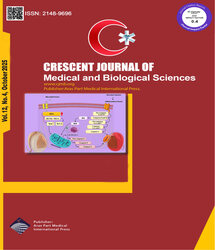

| Original Article | |
| Comparison of Two Types of Gels in Improving Burn Wound | |
| Golnar Rahimzadeh1, Shahnaz Seyedi Dolatabad2, Fatemeh Fallah Rostami3 | |
| 1Department of Microbiology, Science and Research Branch, Islamic Azad University, Tehran, Iran 2Health Technology Development Office, Deputy of Research and Technology, Ministry of Health and Medical Education, Tehran, Iran 3Undersecretary for Research and Technology, Ministry of Health and Medical Education, Pediatric Neuro Rehabilitation Research Center, University of Social Welfare and Rehabilitation Sciences, Tehran, Iran |
|
|
CJMB 2014; 1: 028-032 Viewed : 4351 times Downloaded : 3541 times. Keywords : Burn, Kefir Gel, Wound Healing |
|
| Full Text(PDF) | Related Articles | |
| Abstract | |
Objective: Kefir are natural probiotic compounds with anti-inflammatory properties, which were tested
in experimental burn injury. Kefir gels were prepared from an extract of continuously cultured kefir in
Man, Rogosa and Sharpe Broth medium for 48 and 96 h. Their extracts were used for evaluation of
antibacterial effect against Pseudomonas aeruginosa in standard sample (ATCC 27853) and samples taken
from patients with burns. The antibacterial effect of different kefir extract was assessment of minimum
inhibitory concentration and minimum bactericidal concentration. The density of bacteria and percentage
of organic acids (lactic and acetic acids) were also determined. Materials and Methods: Similar burn injuries were made on dorsal skin surface of 40 rats. The rats were divided into 5 groups of 8 rats each. The base gel, silver sulfadiazine ointment, kefir 48 h gel, kefir 96 h gel were applied twice daily. Burn wound area was measured at baseline, 1 and 2 weeks. Results: Results indicated that by increasing the time of fermentation, concentration of lactic and acetic acid increased in orders of: Kefir 48 h < kefir 96 h, the end of the 2nd week the percentage of wound size were lowest in order of kefir 96 h gel < kefir grains 48 h gel < silver sulfadiazine 1% < untreated and based gel groups. Conclusion: In conclusion, the kefir gel therapy was an effective therapeutic approach to improve outcomes after severe burn when compared with conventional silver sulfadiazine treatment. |
Cite By, Google Scholar
PubMed
Online Submission System
 CJMB ENDNOTE ® Style
CJMB ENDNOTE ® Style
 Tutorials
Tutorials
 Publication Charge
Medical and Biological Research Center
About Journal
Publication Charge
Medical and Biological Research Center
About Journal
Aras Part Medical International Press Editor-in-Chief
Arash Khaki
Deputy Editor
Zafer Akan

















